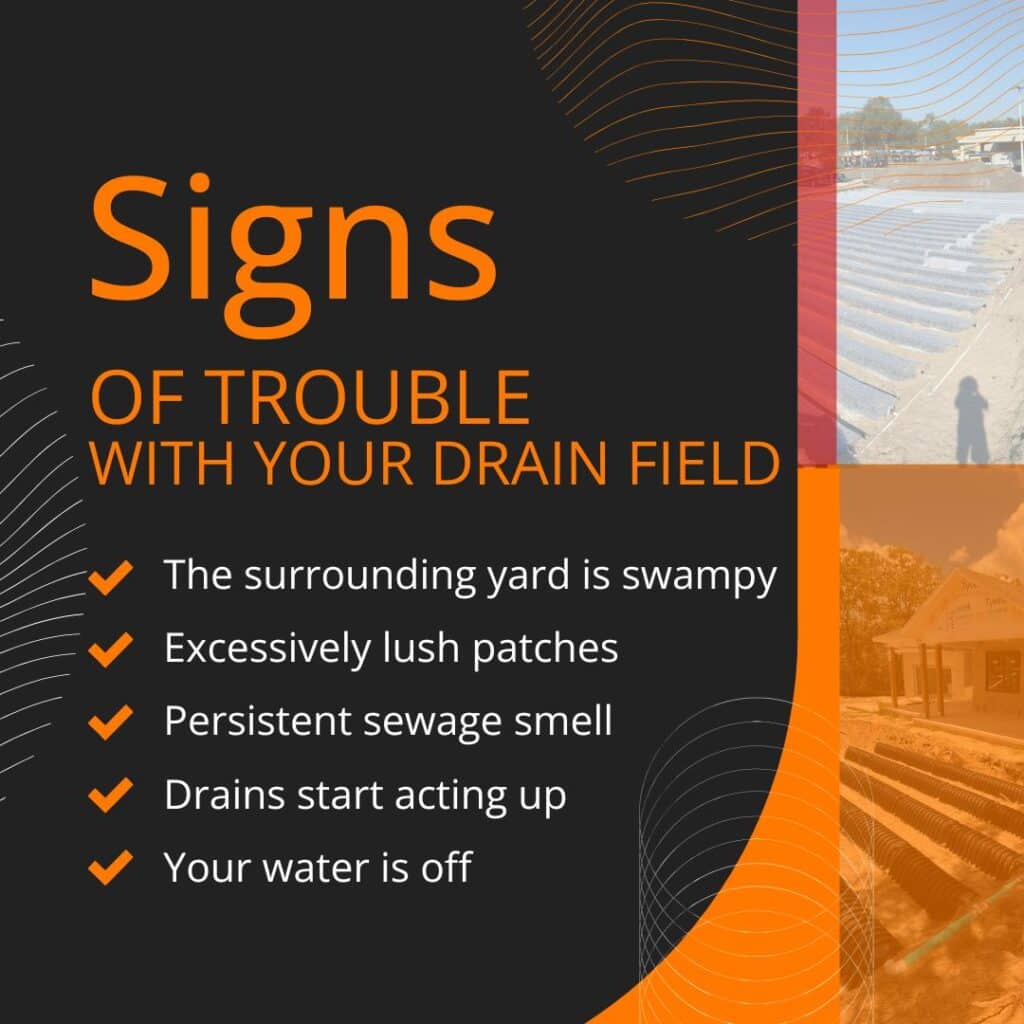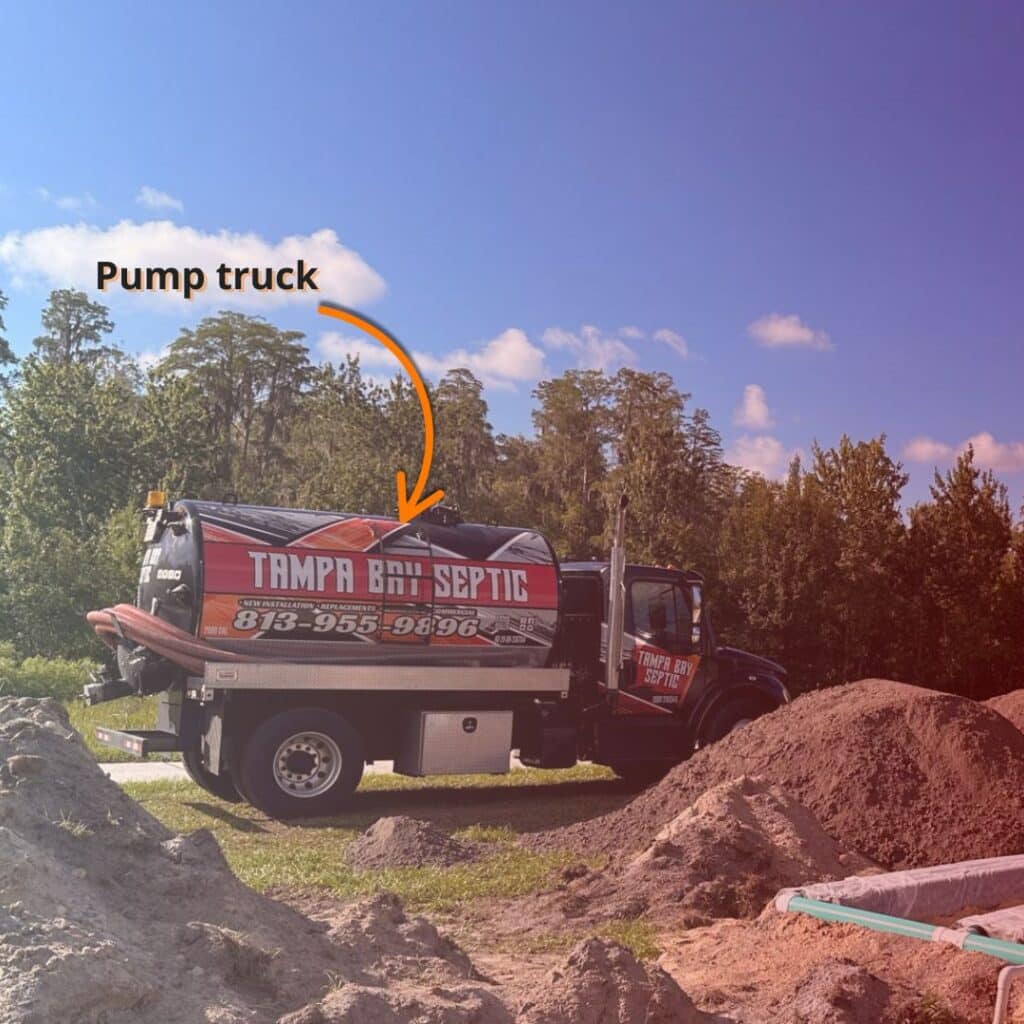Think your septic system is fine just because the toilet still flushes? Maybe. Maybe not. Your septic drain field plays a huge role in keeping things running smoothly behind the scenes (until it needs repair). It’s the final stop for wastewater, where liquids filter through the soil safely and naturally. But when that part of the system starts to fail, it doesn’t always scream for attention. The signs are subtle at first… until they’re not.
Ignoring early warning signs can lead to major damage, costly repairs, and even contamination of your yard or well water. Here’s what to watch for—and why it’s worth acting sooner rather than later.
1. Your Yard Looks Swampy
If your lawn feels soft and soggy—or worse, you’re seeing pools of water in areas that should be dry—your drain field could be oversaturated.
The drain field is where liquid waste (effluent) filters into the soil. When it’s working, you never notice it. But when it clogs or fails, that wastewater has nowhere to go and starts rising to the surface. You might notice:
- Persistent wet spots, even during dry weather
- Mushy ground or sinkholes over the drain field
- A foul, earthy odor near those soggy patches

2. There’s a Persistent Sewage Smell in the Air
If you’re catching whiffs of something nasty, especially around your yard or near the septic system, it’s likely not your imagination.
A well-functioning system should be odorless. Strong, lingering smells often mean your septic drain field isn’t breaking down waste properly, and gases are escaping through the ground instead.
Watch out for:
- Rotten egg or sewage-like smells near the tank or drain field
- Odors coming from indoor drains, especially after heavy use
- Smells that intensify after rain or water use
3. Your Drains Are Acting Up
Slow or gurgling drains might seem like a normal inconvenience, but if it’s happening all over the house, something deeper is going on. The drain field is where wastewater from sinks, toilets, showers, and appliances ends up. If it’s clogged or can’t absorb water fast enough, you’ll notice symptoms inside:
- Slow draining from multiple fixtures
- Frequent toilet backups, especially after laundry or showers
- Gurgling sounds in pipes after flushing or draining
4. One Patch of Grass Is Suspiciously Lush
A greener, faster-growing patch of grass might look like a landscaping win, but it’s usually a red flag when it’s sitting above your drain field.
Why? A failing drain field can leak nutrient-rich effluent close to the surface. That wastewater acts like fertilizer, causing extra lush grass growth in that spot. But while your lawn may thrive, the system is breaking down.
Keep an eye out for:
- A rectangular or oval area of unusually green grass
- Plants or weeds thriving in the drain field zone
- A difference in soil softness or moisture compared to the rest of the yard
5. You Have a Well & the Water Seems Off
If your home relies on well water, any issues with your septic system become even more critical.
When the drain field fails, waste can leach into the surrounding soil and eventually into your water supply. One of the first signs of trouble is elevated nitrate levels, which can be dangerous to drink, especially for infants and people with health conditions.
If your water test results show:
- High nitrate levels
- Presence of coliform bacteria or E. coli
- A strange taste or smell in your water

How to Prevent Drain Field Damage Before It Starts
- Pump your tank regularly (every 3–5 years or as recommended)
- Spread out water use—avoid doing several loads of laundry back-to-back
- Don’t flush anything but toilet paper—wipes, grease, and chemicals can clog the system
- Keep vehicles and heavy equipment off the drain field
- Divert roof runoff and gutters away from the septic area
When to Call in the Pros
If any of these signs sound familiar, don’t wait it out. Septic problems tend to snowball. What starts as a small clog or backup can turn into full system failure, yard damage, or contaminated water. And the longer you wait, the higher the cost to fix it.
A professional septic technician can:
- Inspect your system thoroughly (not just the tank)
- Identify whether the drain field is failing or just under stress
- Recommend targeted solutions that prevent bigger repairs down the roadAvoid DIY “fixes” like dumping chemicals or trying to flush the system yourself. These quick fixes rarely work, and often make things worse.
Conclusion
To recap, your septic system is one of the most important (and expensive) systems in your home. Don’t let small issues spiral into major repairs.
At Tampa Bay Septic, we help homeowners catch problems early and fix them the right way. Whether you need a full drain field inspection, tank service, or just want honest advice, we’re here to help. Get in touch today.
